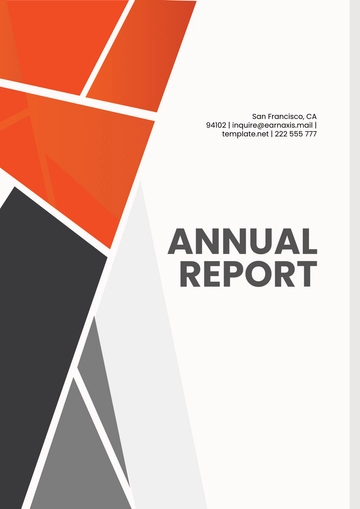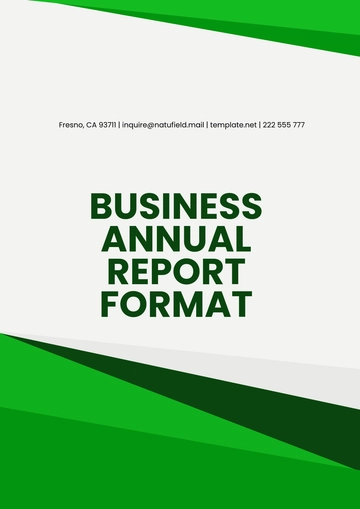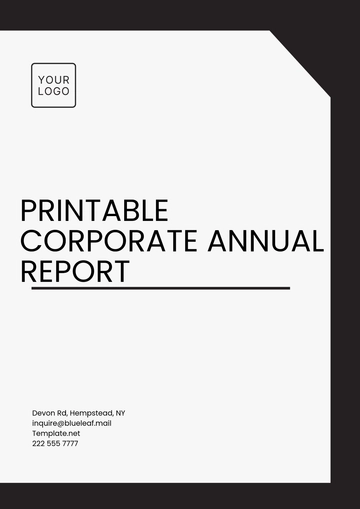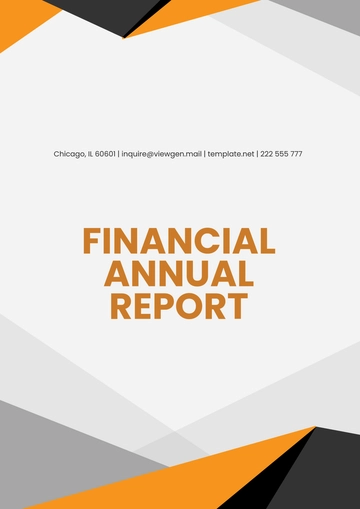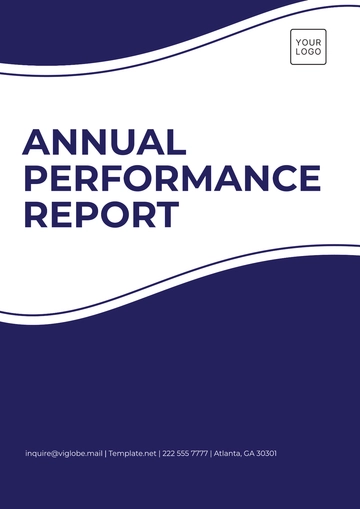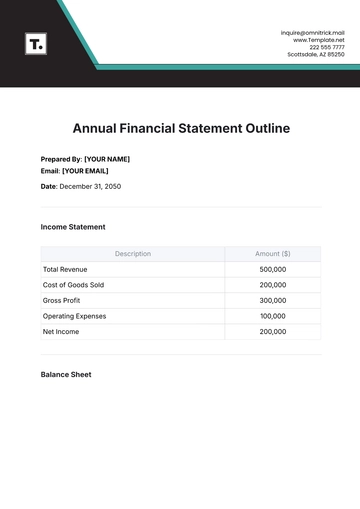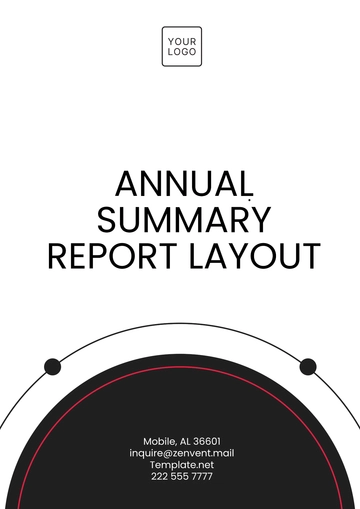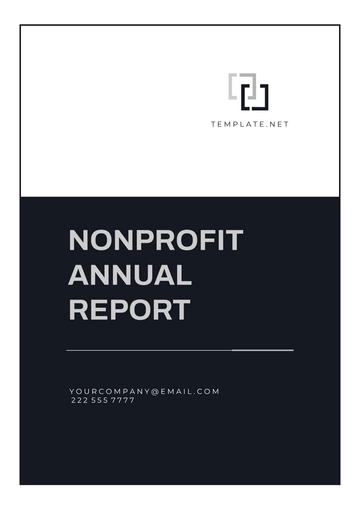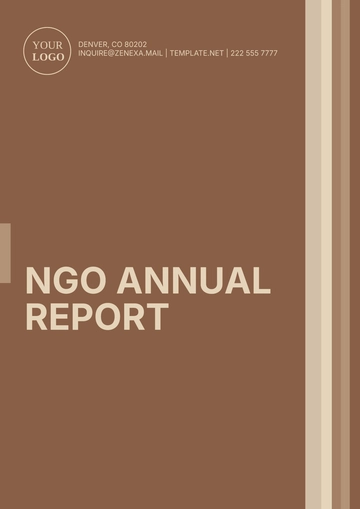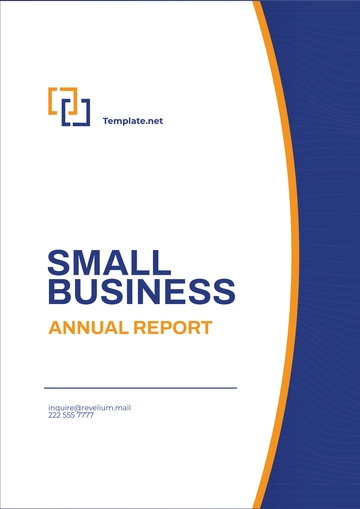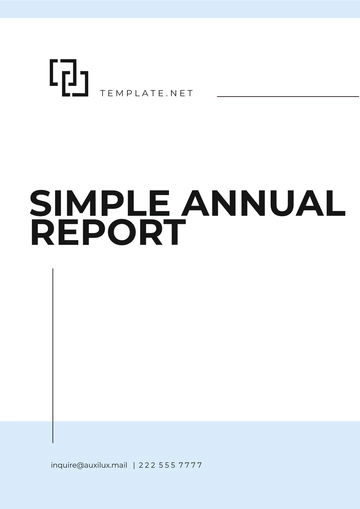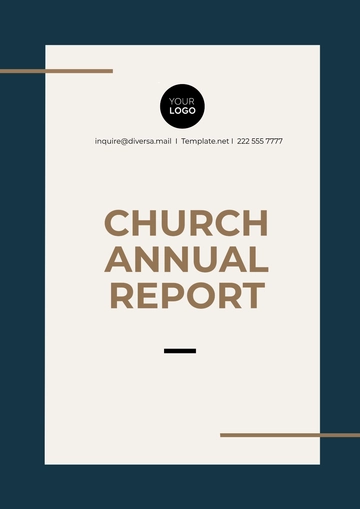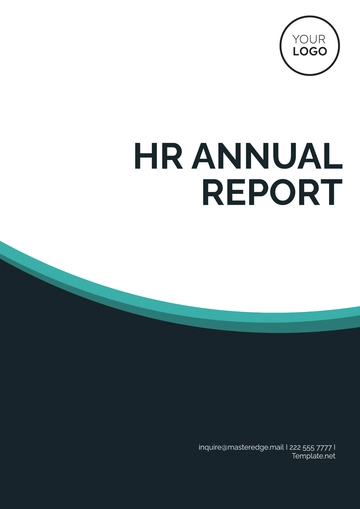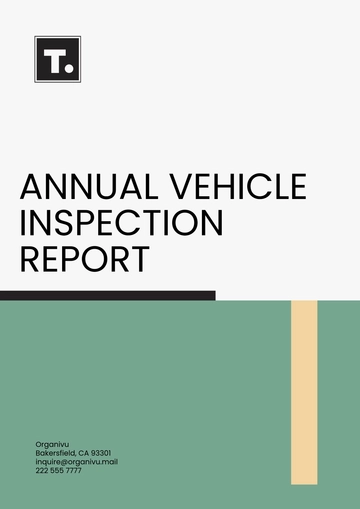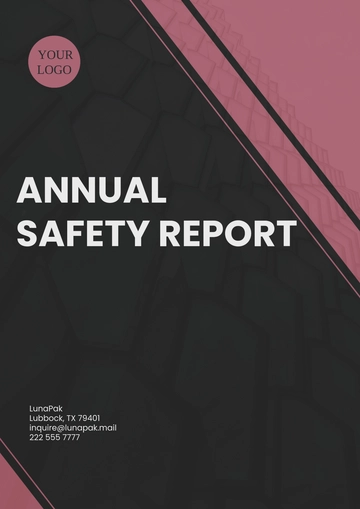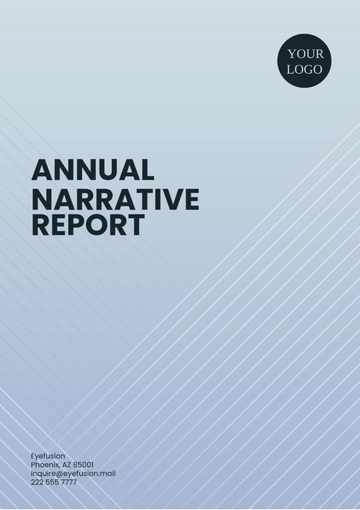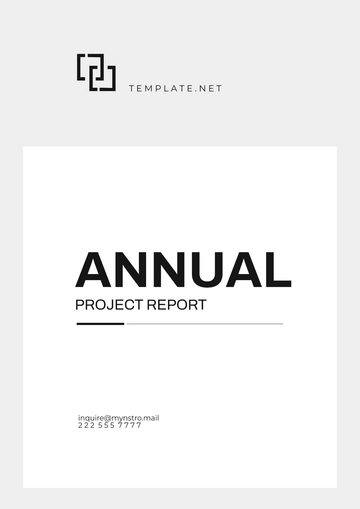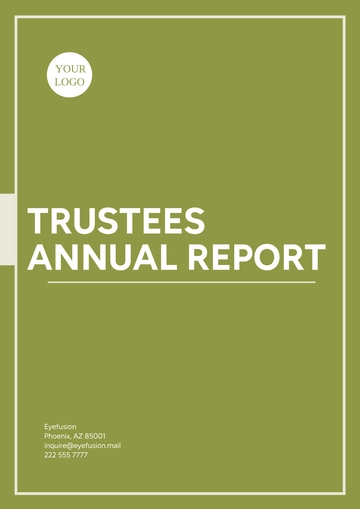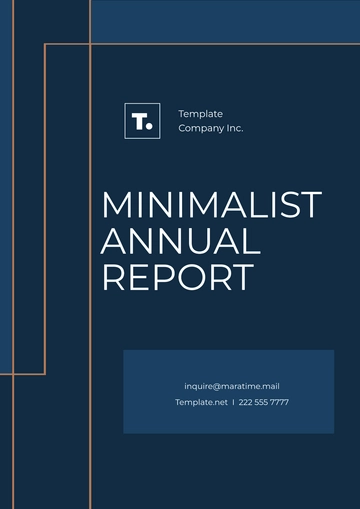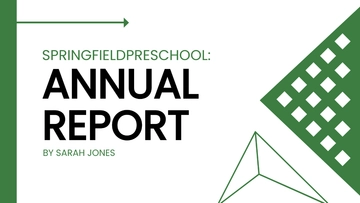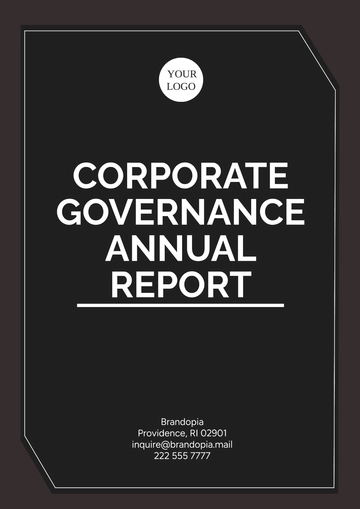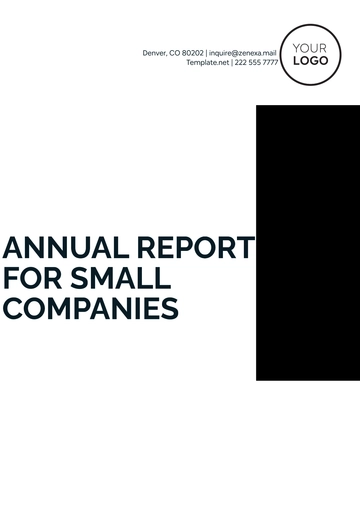Free Annual Health & Safety Awareness Report

I. Executive Summary
Throughout the year, our proactive health and safety initiatives led to increased employee participation in training programs and a noteworthy reduction in reported incidents. Despite the challenges posed by remote work dynamics, our organization demonstrated resilience by implementing innovative solutions, ensuring consistent health and safety communication with our dispersed workforce.
The positive outcomes include a significant decrease in workplace accidents, reflecting the success of targeted communication strategies and indicating a proactive shift in our organizational culture towards reporting and mitigating potential hazards. Notably, there was an uptick in employee engagement with health and safety initiatives, showcasing the successful cultivation of a safety-centric culture. This engagement underscores our workforce's commitment to actively contributing to the maintenance of a secure and healthy environment.
II. Introduction
A. Scope
This report provides a comprehensive overview of our organization's initiatives in promoting health and safety awareness throughout the year. It encompasses various communication campaigns, training programs, and awareness efforts aimed at fostering a secure and compliant workplace.
B. Objectives
Evaluate and Celebrate Progress
Evaluate and celebrate the progress made in instilling safety awareness, highlighting key achievements, and acknowledging the collective dedication of our workforce.
Identify Areas for Enhancement
Identify specific areas for enhancement by analyzing trends, feedback, and insights to further strengthen our safety awareness programs.
Provide Strategic Recommendations
Provide strategic recommendations based on our findings, guiding future initiatives to continuously improve safety awareness practices.
III. Legislative Changes
A. Overview of Regulatory Updates
Throughout the current year, significant changes in relevant regulations impacted our industry. These changes prompted a comprehensive review of our existing health and safety protocols to ensure continued alignment with the evolving legal landscape.
B. Implications for the Company
In response to the updated regulations, proactive measures were implemented to revise safety protocols. Targeted training sessions were conducted for employees to ensure a clear understanding and compliance with the new legal standards. Additionally, investments were made in updated safety equipment to enhance workplace safety.
C. Compliance Initiatives
Adherence Strategies
Demonstrating a proactive stance toward compliance, a dedicated compliance team was established to monitor and promptly implement changes in regulations throughout the current year. Regular internal audits were conducted to identify areas for improvement, and swift corrective actions were taken to ensure ongoing alignment with regulatory standards.
Internal Audits and Assessments
Quarterly internal audits, conducted by our safety committee, became integral to our commitment to self-assessment and continuous improvement in the current year. These audits not only identified areas for enhancement but also served as a proactive measure to maintain a culture of compliance.
IV. Compliance Initiatives and Program Highlights
A. Training and Awareness Programs
Comprehensive Training Modules
Our organization has rolled out comprehensive training modules covering a range of health and safety topics. These sessions, conducted regularly throughout the year, ensure that employees are well-versed in protocols, emergency procedures, and the proper use of safety equipment.
Interactive Workshops
To enhance engagement and understanding, interactive workshops were organized, allowing employees to actively participate in scenario-based learning. This approach not only reinforces key safety principles but also encourages a proactive mindset towards identifying and mitigating potential hazards.
B. Safety Communication Campaigns
Thematic Campaigns
Thematic safety campaigns were strategically implemented to maintain a consistent focus on specific aspects of health and safety. These campaigns utilized various communication channels, fostering a collective understanding of safety priorities among employees.
Digital Platforms
Leveraging digital platforms, we introduced targeted safety messages through company-wide emails, intranet updates, and interactive webinars. These initiatives not only reinforced critical safety information but also facilitated two-way communication, allowing employees to share feedback and report safety concerns.
V. Internal Audits and Continuous Improvement
A. Internal Audits
Regular Audit Schedule
Internal audits, conducted at regular intervals by our safety committee, have been a cornerstone of our compliance strategy. These audits systematically evaluate safety protocols, identify areas for enhancement, and ensure that our practices align with regulatory standards.
Employee Involvement
In promoting a sense of shared responsibility, employees are actively involved in the audit process. Through suggestion boxes and feedback sessions, we encourage our workforce to contribute insights, report potential hazards, and actively engage in the ongoing improvement of our safety measures.
B. Corrective Actions and Preventive Measures
Swift Corrective Actions
Immediate corrective actions are taken in response to audit findings or reported safety concerns. This proactive approach ensures that potential risks are swiftly mitigated, contributing to a safer working environment for all.
Preventive Measures Implementation
Beyond addressing immediate concerns, we proactively implement preventive measures based on audit trends and industry best practices. This forward-looking strategy aims to anticipate potential issues and continuously enhance our safety protocols.
VI. Incident Management and Reporting
A. Incident Response Protocols
Clear Reporting Procedures
Our organization maintains clear and accessible reporting procedures for all employees. In the event of an incident, employees are guided through a streamlined reporting process, ensuring that all necessary details are captured promptly.
Incident Severity Classification
To prioritize responses, incidents are classified based on severity. This classification system allows us to allocate resources efficiently, with immediate attention given to high-severity incidents while ensuring that all incidents, regardless of severity, are thoroughly investigated.
B. Investigation and Root Cause Analysis
Thorough Investigations
Every reported incident triggers a thorough investigation led by our incident response team. These investigations aim to uncover the root causes of incidents, providing insights into systemic issues and informing corrective actions.
Root Cause Analysis Framework
A structured root cause analysis framework is applied to dissect incidents. This framework includes evaluating immediate causes, underlying factors, and systemic issues to develop comprehensive solutions that prevent similar incidents in the future.
VII. Lessons Learned and Corrective Actions Implementation
A. Knowledge Sharing
Incident Debrief Sessions
Post-incident debrief sessions are conducted to facilitate knowledge sharing. These sessions involve relevant stakeholders, including employees directly involved in the incident, fostering open communication and ensuring that lessons learned are disseminated throughout the organization.
Best Practice Documentation
Identified best practices emerging from incidents are documented and shared across departments. This proactive approach not only prevents the recurrence of similar incidents but also encourages a culture of continuous improvement.
B. Corrective Action Implementation
Actionable Recommendations
Recommendations arising from incident investigations are translated into actionable corrective measures. These recommendations cover immediate remediation steps, procedural adjustments, and long-term preventive measures.
Performance Monitoring
The implementation of corrective actions is closely monitored. Key performance indicators are established to track the effectiveness of these actions over time, ensuring sustained improvements in health and safety outcomes.
VIII. Emergency Preparedness and Response
A. Emergency Planning
Comprehensive Emergency Plans
Our organization maintains comprehensive emergency response plans covering a range of scenarios, from natural disasters to industrial incidents. These plans are regularly reviewed, updated, and communicated to all employees, ensuring a collective understanding of emergency procedures.
Evacuation Drills and Training
To ensure preparedness, evacuation drills and training sessions are conducted periodically. These drills not only familiarize employees with evacuation routes but also assess the effectiveness of our emergency plans, allowing for refinement as needed.
B. Communication and Coordination
Communication Protocols
Clear communication protocols are established to disseminate timely and accurate information during emergencies. This includes designated communication channels, emergency contact lists, and a system for rapidly notifying employees of evolving situations.
Coordination with Emergency Services
Our organization maintains strong partnerships with local emergency services. Regular coordination meetings and joint training exercises are conducted to enhance collaboration, ensuring a seamless integration of internal response efforts with external support.
IX. Health and Safety Performance Metrics
The following list provides an overview of the health and safety performance metrics tracked throughout the current year to measure the effectiveness of our initiatives:
A. Leading Indicators
Employee Engagement Surveys
Regular employee engagement surveys include specific questions related to health and safety perceptions. This data provides valuable insights into the effectiveness of our communication, training, and overall safety culture.
Near Miss Reporting
The reporting of near misses is actively encouraged. A high near miss reporting rate is considered a leading indicator of a proactive safety culture, allowing us to identify and rectify potential hazards before incidents occur.
B. Lagging Indicators
Incident Rates and Severity
Incident rates and severity are closely monitored and analyzed. This includes tracking the number of incidents, lost workdays, and severity classifications. This data informs our understanding of the overall safety performance and areas requiring focused improvement.
Compliance Audits and Findings
Compliance audits, both internal and external, contribute to lagging indicators. Monitoring findings from audits helps gauge the effectiveness of our compliance initiatives and guides corrective actions to address identified gaps.
X. Comparative Analysis
The table and graph below illustrates the changes in selected health and safety metrics between the last year and the current year.
Metric | Last Year | Current Year | Difference |
Number of Reported Incidents | 15 | 8 | 7 |
Comparative analysis serves as a valuable benchmarking tool, allowing us to assess the effectiveness of our health and safety initiatives against the previous year's performance. Examining year-over-year changes helps identify emerging trends and patterns. Positive shifts like decrease in incidents may indicate a more proactive safety culture, while negative trends prompt targeted interventions to address specific challenges.
XI. Recommendations
A. Interactive Safety Workshops
Introduce interactive safety workshops to actively engage employees in discussions and scenario-based learning, fostering a deeper understanding of safety protocols.
B. Regular Safety Reminders
Implement a system for regular safety reminders through various communication channels, emphasizing key safety practices and promoting continuous awareness.
C. Utilize Digital Platforms
Leverage digital platforms to disseminate safety awareness materials, including infographics, videos, and interactive modules, ensuring accessibility and engagement.
D. Recognition Programs
Establish safety recognition programs to acknowledge and reward employees for their contributions to maintaining a safe working environment, encouraging a sense of ownership.
E. Peer-to-Peer Safety Mentoring
Encourage peer-to-peer safety mentoring programs where experienced employees mentor newcomers, sharing practical insights and reinforcing safety awareness on the job.
F. Emergency Response Drills
Expand the scope of emergency response drills to include regular safety drills that simulate potential workplace hazards, ensuring employees are well-prepared for various scenarios.
G. Anonymous Safety Reporting Channels
Implement anonymous reporting channels to encourage employees to report safety concerns without fear of reprisal, facilitating open communication and early hazard identification.
H. Continuous Training Opportunities
Provide continuous safety training opportunities throughout the year, ensuring that employees have access to updated information and remain vigilant in maintaining a safe work environment.
XII. Conclusion
In summary, this year's report signifies our enduring commitment to prioritizing the well-being of our workforce. The comprehensive analysis, strategic recommendations, and collective efforts outlined in this report underscore our dedication to fostering a culture of safety excellence. As we bring this annual review to a close, we remain steadfast in our mission to create an environment that is not only safer and healthier but also characterized by heightened safety awareness. The insights gained will guide our future initiatives, ensuring a workplace where safety is ingrained in every aspect of our operations. We look forward to a year of continued progress and an unwavering commitment to the safety and well-being of all stakeholders.
- 100% Customizable, free editor
- Access 1 Million+ Templates, photo’s & graphics
- Download or share as a template
- Click and replace photos, graphics, text, backgrounds
- Resize, crop, AI write & more
- Access advanced editor
Elevate your organization's safety protocols with Template.net's Annual Health & Safety Awareness Report Template. This editable and customizable template, crafted with precision using our AI Editor Tool, streamlines your reporting process. Ensure compliance and promote a culture of safety effortlessly with Template.net's innovative solutions.
You may also like
- Sales Report
- Daily Report
- Project Report
- Business Report
- Weekly Report
- Incident Report
- Annual Report
- Report Layout
- Report Design
- Progress Report
- Marketing Report
- Company Report
- Monthly Report
- Audit Report
- Status Report
- School Report
- Reports Hr
- Management Report
- Project Status Report
- Handover Report
- Health And Safety Report
- Restaurant Report
- Construction Report
- Research Report
- Evaluation Report
- Investigation Report
- Employee Report
- Advertising Report
- Weekly Status Report
- Project Management Report
- Finance Report
- Service Report
- Technical Report
- Meeting Report
- Quarterly Report
- Inspection Report
- Medical Report
- Test Report
- Summary Report
- Inventory Report
- Valuation Report
- Operations Report
- Payroll Report
- Training Report
- Job Report
- Case Report
- Performance Report
- Board Report
- Internal Audit Report
- Student Report
- Monthly Management Report
- Small Business Report
- Accident Report
- Call Center Report
- Activity Report
- IT and Software Report
- Internship Report
- Visit Report
- Product Report
- Book Report
- Property Report
- Recruitment Report
- University Report
- Event Report
- SEO Report
- Conference Report
- Narrative Report
- Nursing Home Report
- Preschool Report
- Call Report
- Customer Report
- Employee Incident Report
- Accomplishment Report
- Social Media Report
- Work From Home Report
- Security Report
- Damage Report
- Quality Report
- Internal Report
- Nurse Report
- Real Estate Report
- Hotel Report
- Equipment Report
- Credit Report
- Field Report
- Non Profit Report
- Maintenance Report
- News Report
- Survey Report
- Executive Report
- Law Firm Report
- Advertising Agency Report
- Interior Design Report
- Travel Agency Report
- Stock Report
- Salon Report
- Bug Report
- Workplace Report
- Action Report
- Investor Report
- Cleaning Services Report
- Consulting Report
- Freelancer Report
- Site Visit Report
- Trip Report
- Classroom Observation Report
- Vehicle Report
- Final Report
- Software Report
